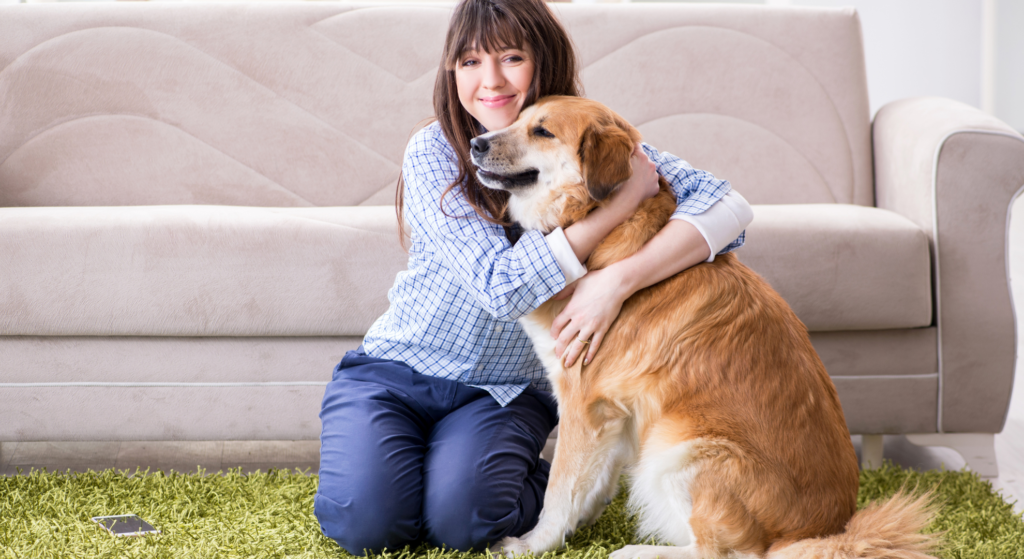In today’s world, many individuals seeking rehabilitation services are looking for options that allow them to keep their beloved pets by their side. Recognizing the therapeutic benefits that pets provide, Pet Friendly Rehab in Southern California offers a compassionate approach to recovery. This comprehensive guide will navigate the pet-friendly rehab process, detailing each step to help you make informed decisions while ensuring the well-being of both you and your furry companions.
Understanding the Importance of Pet-Friendly Rehab
Why Choose Pet-Friendly Rehab?
For many people, pets are more than just animals; they are cherished members of the family. Studies have shown that the presence of pets can reduce stress, anxiety, and feelings of loneliness, making them an invaluable part of the recovery process. Here are several reasons why choosing a pet-friendly rehab facility like Pet Friendly Rehab in Southern California can be beneficial:
- Emotional Support: Pets offer unconditional love and companionship, which can significantly enhance emotional well-being during challenging times.
- Stress Relief: Interacting with pets has been proven to lower cortisol levels, leading to reduced stress and anxiety.
- Encouragement to Participate: Caring for a pet can motivate individuals to engage more actively in their rehab programs, providing a sense of responsibility and routine.
The Unique Features of Pet Friendly Rehab
Pet Friendly Rehab offers a unique environment where clients can live and recover alongside their pets. This facility is designed to cater to the needs of both humans and animals, ensuring that everyone receives the care and attention they deserve.
Step 1: Assessing Your Needs and Researching Facilities
Identifying Your Requirements
Before you begin your search for a pet-friendly rehab center, it’s essential to assess your specific needs. Consider the following factors:
- Type of Treatment: Are you looking for inpatient, outpatient, or intensive outpatient treatment?
- Duration: How long do you expect to stay in rehab?
- Pet Needs: What specific needs does your pet have? For instance, does your pet require special care or has any medical conditions?
Researching Pet-Friendly Rehab Centers
Once you’ve identified your needs, start researching rehab centers that cater to both you and your pet. Here’s how to streamline your search:
- Online Research: Look for facilities that specifically mention being pet-friendly. Read reviews and testimonials from former clients to gauge the quality of care.
- Facility Accreditation: Ensure that the rehab center is accredited and follows established treatment protocols.
- Consultation: Schedule consultations with potential facilities, including Pet Friendly Rehab in Southern California, to ask questions and understand their approach to pet-inclusive treatment.
Step 2: Preparing for Admission
Gathering Necessary Documentation
Once you’ve selected Pet Friendly Rehab, it’s essential to prepare for admission. This involves gathering necessary documentation, which may include:
- Medical Records: Provide records of any prior treatments and your medical history.
- Pet Vaccination Records: Ensure your pet’s vaccinations are up to date, as most facilities require proof of immunization.
- Pet Care Plan: Prepare a plan for your pet’s daily care and any specific needs they may have.
Setting Up Financial Arrangements
Before entering rehab, check your insurance coverage and understand the costs involved. Contact Pet Friendly Rehab to inquire about payment options, financial aid, or sliding scale fees that may be available to help ease the financial burden of treatment.
Step 3: Admission and Orientation
The Admission Process
On the day of your admission to Pet Friendly Rehab, be prepared for the following:
- Initial Assessment: You will undergo an assessment to evaluate your treatment needs and goals.
- Pet Introduction: Bring your pet along for an introduction to the facility and staff. This helps your pet acclimate to the new environment.
- Review of Policies: Familiarize yourself with the facility’s policies regarding pets, treatment schedules, and available resources.
Orientation for Clients and Pets
After admission, you will participate in an orientation session. This session will cover:
- Facility Layout: Understanding the facility’s layout will help you navigate your surroundings more easily.
- Treatment Overview: Review the treatment options available and what to expect during your stay.
- Pet Care Guidelines: Learn about the pet care guidelines in place to ensure the safety and well-being of all animals in the facility.

Step 4: Participating in Treatment and Maintaining Routine
Engaging in Therapy Sessions
At Pet Friendly Rehab, you will have access to various therapeutic modalities tailored to your needs. These may include:
- Individual Therapy: One-on-one sessions with a licensed therapist to address personal challenges.
- Group Therapy: Participating in group sessions can foster a sense of community and support among clients.
- Pet Therapy: Many facilities, including Pet Friendly Rehab, offer structured pet therapy sessions that promote bonding and healing through interactions with animals.
Maintaining a Routine
Establishing a daily routine is vital to successful recovery. Ensure that your routine incorporates:
- Pet Care: Allocate time each day for feeding, walking, and bonding with your pet.
- Therapy and Activities: Attend all scheduled therapy sessions and engage in activities designed to enhance your recovery experience.
Step 5: Aftercare Planning
Creating an Aftercare Plan
As your treatment at Pet Friendly Rehab comes to an end, it’s essential to create an aftercare plan. This plan may include:
- Continued Therapy: Arrange for follow-up therapy sessions after leaving rehab to support your ongoing recovery.
- Support Groups: Identify local support groups or community resources that can provide additional support.
- Pet Care Considerations: Ensure that you have a plan for your pet’s ongoing care and any adjustments needed as you transition back to daily life.
Transitioning Back Home
The transition back home can be challenging for both you and your pet. Here are some tips to ease the process:
- Gradual Reintroduction: Slowly reintroduce your pet to your home environment and daily routine.
- Open Communication: Communicate with family members or housemates about any changes in your lifestyle and how they can support you and your pet.
- Ongoing Support: Continue utilizing resources from Pet Friendly Rehab, such as follow-up sessions or check-ins with staff, to ensure a smooth transition.}
Frequently Asked Questions (FAQ)
What is a pet-friendly rehab facility?
A pet-friendly rehab facility allows individuals undergoing treatment to bring their pets along during their stay. This approach helps enhance emotional well-being by providing companionship and support.
How do I know if Pet Friendly Rehab is right for me?
To determine if Pet Friendly Rehab is suitable for you, assess your treatment needs, research the facility’s offerings, and schedule a consultation to discuss your specific requirements and goals.
What types of pets are allowed at Pet Friendly Rehab?
Typically, common pets like dogs and cats are welcome at Pet Friendly Rehab. However, it’s essential to check with the facility regarding their specific policies on pet types and sizes.
Are there additional costs associated with bringing a pet to rehab?
There may be additional costs for pet care services, such as grooming or specialized food. It’s best to inquire directly with Pet Friendly Rehab about any fees that may apply.
What should I bring for my pet when checking into rehab?
When checking into Pet Friendly Rehab, bring your pet’s food, toys, bedding, medications, and any other essential items they may need during your stay.
How does pet therapy work in rehab?
Pet therapy involves structured interactions with trained therapy animals, helping clients reduce stress, improve mood, and foster emotional connections that aid in recovery.
What happens to my pet during my treatment?
While you undergo treatment at Pet Friendly Rehab, you will care for your pet as part of your routine. Staff will also be available to assist with pet care as needed.
How can I prepare my pet for my rehab stay?
To prepare your pet for your rehab stay, familiarize them with the facility’s environment and schedule. Ensure they are up to date on vaccinations and have a clear care plan.
Will my treatment be affected by having my pet with me?
Having your pet with you can enhance your treatment experience, providing emotional support. Pet Friendly Rehab integrates pet care into the recovery process, ensuring both you and your pet receive the attention you need.
How can I maintain my recovery after leaving rehab with my pet?
To maintain your recovery after leaving Pet Friendly Rehab, establish a routine that includes ongoing therapy, support groups, and a focus on your pet’s care and well-being.
Conclusion
Navigating the pet-friendly rehab process can be a rewarding experience that enhances your recovery journey. By choosing Pet Friendly Rehab in Southern California, you are making a decision that prioritizes not only your well-being but also the emotional support and companionship your pet provides. By following the steps outlined in this guide, you can approach rehab with confidence, knowing that you and your beloved pet will receive the care you both need.
For more information about our programs and how we can help you navigate the rehab process with your pet, feel free to contact Pet Friendly Rehab today. Together, we can create a path to recovery that honors the bond between you and your furry friend.



